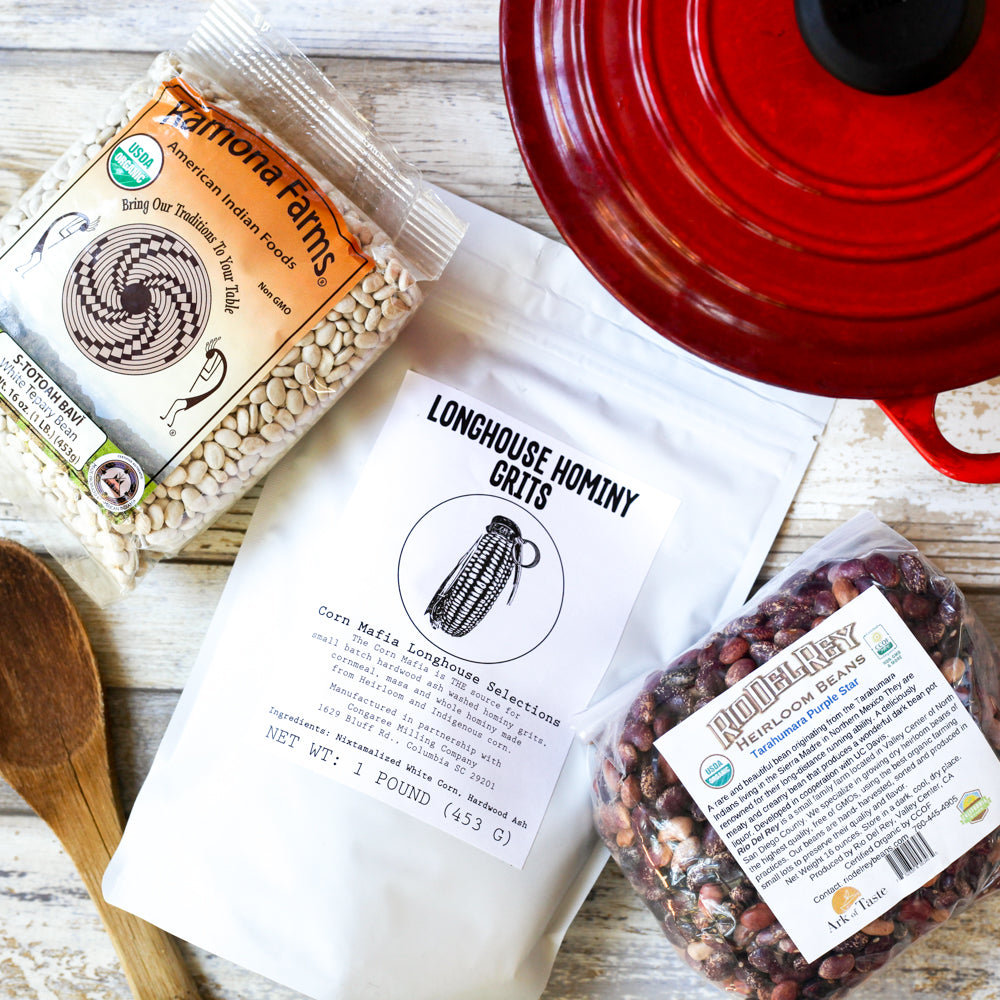10.99 FLAT RATE SHIPPING
10.99 FLAT RATE SHIPPING
SHOP

Savouring The Ark Of Taste
April 18, 2024 4 min read
Embarking on a journey through the Slow Food Ark of Taste is akin to stepping into a time capsule of culinary wonders. Each ingredient encapsulates centuries of food heritage, offering a tantalizing glimpse into the flavors, traditions, and stories that have shaped our food landscape. Join us as we delve deeper into the origins, flavors, and significance of some of the most revered denizens of this epicurean sanctuary.
What Is The Ark of Taste?
The Ark of Taste is a living catalog of delicious and distinctive foods facing extinction. By identifying and championing these foods, we keep them in production and on our plates. Each ingredient, with its unique flavor, history, and significance, tells a story of resilience, ingenuity, and adaptation.
At its core, the Slow Food Ark of Taste is a testament to the power of preservation and reverence for culinary diversity. Rooted in the ethos of sustainable gastronomy, this initiative aims to safeguard endangered food products, cultivars, and traditional culinary practices from extinction. By celebrating the richness of our culinary heritage, the Ark of Taste serves as a beacon of hope, ensuring that future generations inherit a vibrant tapestry of flavors and cultural traditions. Boco

What Is Slow Food?
Started as a protest against fast food and oppressive food systems in Italy in the 1980s, Slow Food is a million-member movement of food activists around the world. Here in the US, they are uniting the joy of food with the pursuit of justice and dismantling oppressive food systems to achieve good, clean and fair food for all.
Slow Food USA cultivates nationwide programs and a network of local chapters, hosts educational events and advocacy campaigns, and builds solidarity through partnerships. Join Slow Food USA and enjoy 5% off every Foodocracy order all year long!
Your Ticket To The Ark
The Foodocracy is committed to championing these unique and culturally important ingredients, helping them find a place on your table so that we can insure that they are around for generations.
Sea Island Red Peas
Nestled in the verdant Lowcountry of South Carolina, Sea Island Red Peas are a culinary treasure with roots that stretch back to the era of slavery. Renowned for their creamy texture and earthy flavor, these legumes bear witness to the resilience and ingenuity of enslaved Africans who cultivated them amidst the harsh conditions of plantation life. Traditionally simmered with ham hocks and aromatic herbs, Sea Island Red Peas embody the soulful essence of Southern cuisine, offering a taste of history with every spoonful.

Carolina Gold Rice
Carolina Gold Rice gets it’s name from the beautiful golden hue in the field right before harvest. This long grain rice has exceptional aroma, flavor and texture. It has a subtle nutty almond and floral aromas and flavors as well as a starch structure that makes it uniquely prized by home cooks and chefs alike.
A celebrated Slow Food Ark of Taste ingredient it was the basis of the colonial and antebellum economy of Carolina and Georgia. Considered the grandfather of long grain rice in the Americas, Carolina Gold became a commercial staple grain in the coastal lands of Charles Towne in the Carolina Territory in 1685. Possessing superior flavor, aroma, texture and cooking qualities, Carolina Gold rice brought fortunes to those who produced it and created an influential culture and cuisine in the city of Charleston. After the depression, Carolina Gold rice lost its prominence to new varieties and became virtually extinct. Greg Johnsman of Marsh Hen Mill helps preserve this bit of South Carolina culinary tradition by growing the historic grain on his Edisto Island family farm.
Tepary Beans
Hailing from the arid landscapes of the American Southwest, tepary beans are a testament to the resilience and adaptability of Indigenous peoples. Thriving in the harsh desert environment, these drought-tolerant legumes have sustained Native American communities for millennia, serving as a vital source of sustenance and cultural significance. With their nutty flavor and tender texture, tepary beans are prized for their versatility in both traditional and contemporary cuisines, from hearty stews to savory salads.
Orleans Method Vinegar by American Vinegarworks
Utilizing a 200 year old hand crafted technique not only helps preserves this nearly extinct production method, it creates a more full-body and nutrient rich vinegar. The Orleans method was developed in France and mandates a long, slow natural fermentation unlike modern techniques where wine is flushed with oxygen and rapidly fermented.
Jimmy Red Corn

Jimmy Red was a Native American corn that made its way south to Florida, Georgia and the South Carolina Islands where it was largely used to create moonshine. It was not well known outside of bootlegger circles until the last of the bootleggers passed away and nearly took Jimmy Red with him. Lucky for us someone saved a couple of ears and gave them to a celebrated farmer and seed saver who found that this unique variety was good for much more than hooch. He gave seeds to several small farmers including Marsh Hen Mill who makes spectacular grits and cornmeal with the grain.
Why all the fuss? Jimmy Red is a distinctly unique corn with a nutty aroma and a personality all its own. It has been said that tasting grits made of Jimmy Red is like tasting what grits must have tasted like in the 1800s.
Seashore Black Rye
Forged by the briny embrace of the Atlantic Coast, Seashore Black Rye embodies the rugged beauty and maritime heritage of coastal communities. Resilient and robust, this ancient grain thrives in the salty air and sandy soils, yielding a distinctive flavor profile that is both earthy and bracing. From hearty loaves of bread to crisp crackers and savory pancakes, Seashore Black Rye adds a touch of coastal charm to a variety of culinary delights.
Einkorn
Einkorn, a German word meaning ‘single grain’, is one of the oldest cereal grains to be cultivated by man for human consumption and is believed to have been domesticated around 7500 BC. Once the primary grain of in the UK it fell out of favor in the Bronze Age and almost disappeared until being rediscovered by small farms and artisanal bakers just a decade ago. The grain has delicious and complex flavors and it's a nutritional powerhouse with higher levels of protein and antioxidants than regular wheat.
Recent Articles
About Us
Foodocracy is dedicated to creating a more sustainable and independent food system. We support small, independent farms across the nation.
Get impossible to find beans and grains shipped direct to your doorstep each month from small family farms.
We support small, family owned farms across the nation. Did you know that farmers only make an average of 10 cents on every dollar you spend at the supermarket? Working directly with farms and not middle men ensures that more money goes back to the people actually growning your food.
Get 10% Off
Sign up for delicious recipes and special offers.
**Regularly priced items only.




